We get a lot of people asking us for technical advice on the Beta, one of the things we commonly get asked is about the fork oil level, to keep things simple:
2009 – 2017 Beta Evo, 120mm air gap spring side, 60mm damper – pump the damping rod to fill the chamber before measuring. Spring out, fork legs fully compressed. 5w oil.
2018 – 2023 Beta Evo, 130mm air gap spring side, 65mm damper – pump the damping rod to fill the chamber before measuring. Spring out, fork leg fully compressed. 5w oil.
The above was the advice given to us by the UK Beta importers.
It is better to set the air gap, rather than using a quantity of oil when rebuilding the Beta forks as it is difficult to get all the old oil out without fully dismantling the forks and the damper.
Right Hand Leg (Damper Side)
The air gap is measured from the top of the oil to the top of the fork stanchion for the right hand fork leg, the one with the damper in it, this is with the forks bottomed out and the damper as far down as it will go, to do it properly you need to undo the top cap off the damping rod so the damping rod can be pushed all the way down.
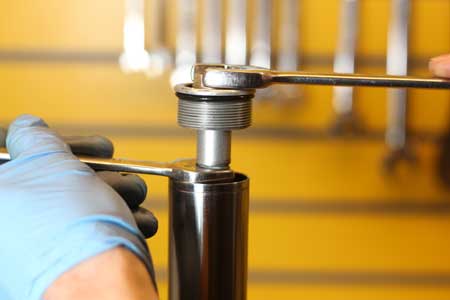
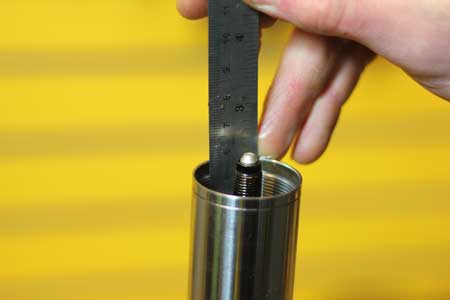
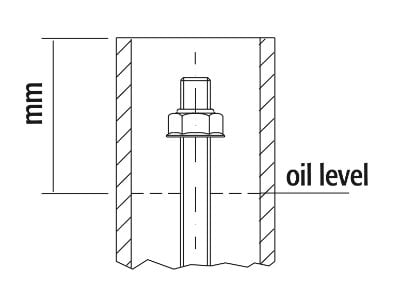
Right Hand Leg – Easy Option
To do a quick check and save you taking the top cap off the damper rod you can use a thin rule and put it down the side of the top cap, then push the top cap down to the top of the forks you should then have around a 5mm bigger air gap (than specified, see notes at the top of the page) from the top of the oil to the top of the fork stanchion. You need a bigger air gap as the damper rod displaces the oil as it is pushed further in and when you leave the cap on you cannot fully push the damping rod all the way down.
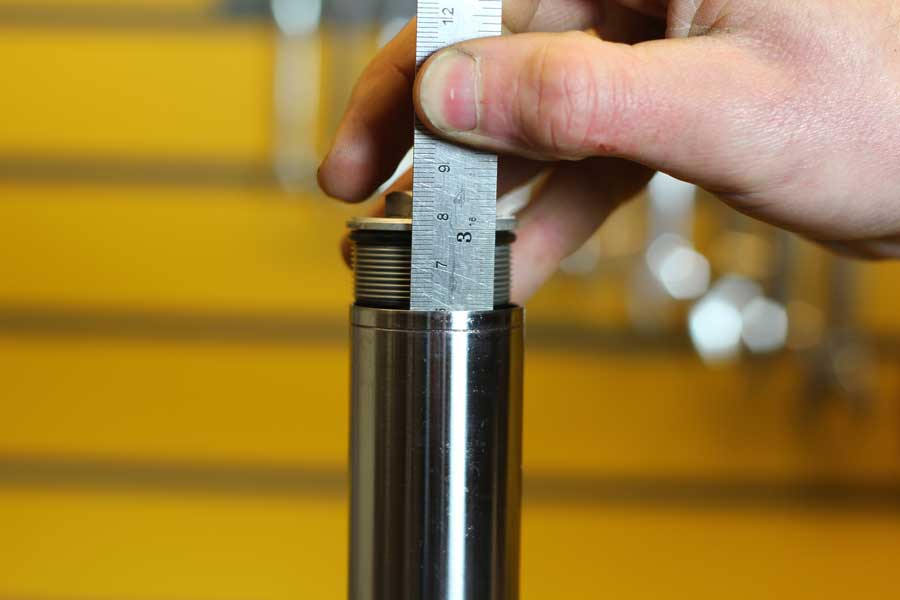
Left Hand Leg (Spring Side)
The air gap is measured from the top of the oil to the top of the fork stanchion for the left hand fork leg, the one with the spring in it, this is with the forks bottomed out and the spring removed from the fork leg.
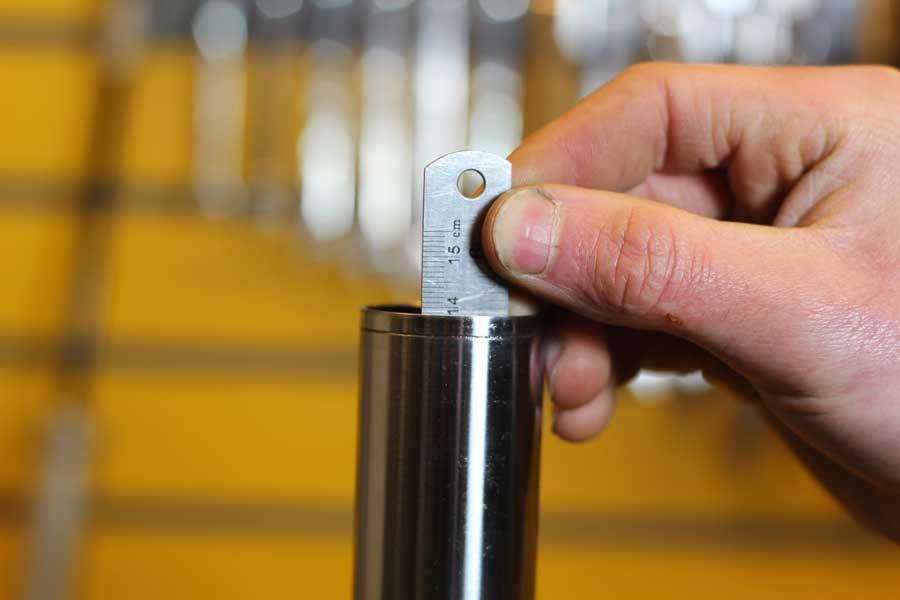
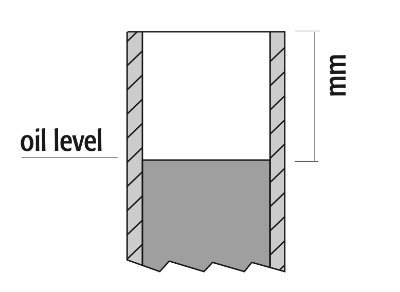
Oil & Dust Seals
The oil seals usually start leaking because the dust seals have let dirt past and damaged the oil seal. It is advisable to swap both at the same time.
See here for our available options:
Beta Paioli 38mm Fork Oil & Dust Seals
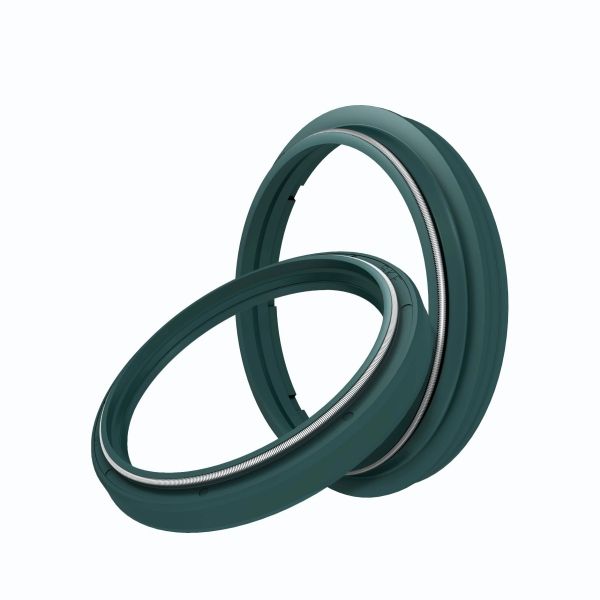
Bushes
Before rebuilding, check the condition of the bushes. There is 1 at the bottom of the stanchion & 1 at the top of the lower leg. They are lined with a thin coating of teflon, if these are worn, replace asap.
See here for our available options:
Ceriani / Paioli 38mm Bush Kit
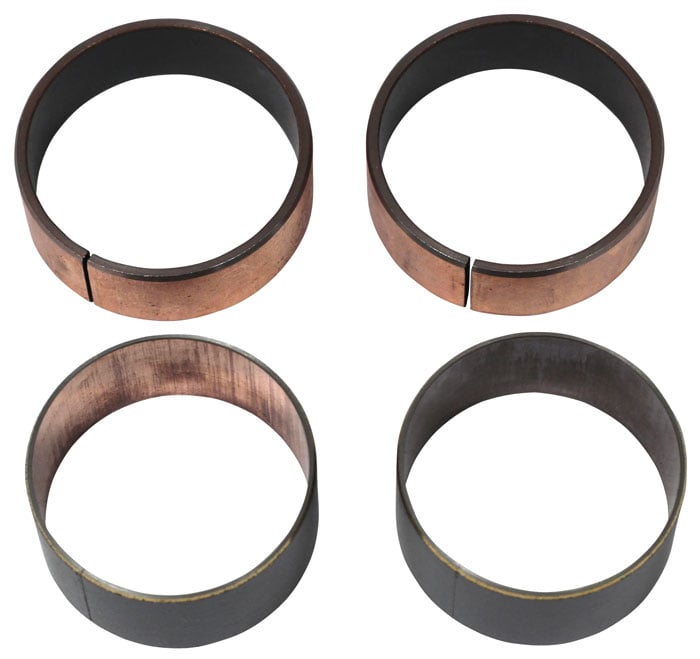
The more complicated answer i.e. whats in the Owners Manuals
I’ve pulled the following information from the manuals:
Beta Evo 2009 to 2012 2T, air gap Damper 60mm, Spring 120mm, oil OJ01
Beta Evo 2013 2T (plus 2009 to 2012 4T), air gap Damper 70mm, Spring 130mm, oil OJ01 or Bel ray “mc 10sae 5” this manual also states these quantities Damper 370cc , Spring 350cc
Beta Evo 2014 2T, air gap Damper 70mm, Spring 130mm, oil Shell Tellus S2 V32 SAE 6,1
Beta Evo 2015 to 2017 (+ 2018 4T), air gap Damper 65mm, Spring 125mm, oil Shell Tellus S2 V32 SAE 6,1
Beta Evo 2018 2T, air gap Damper 297g, Spring 297g, oil Shell Tellus S2 V32 SAE 6,1
Beta (Factory models only) 2018, air gap Damper 65mm, Spring 125mm but now Fuchs 5113D SAE 5 in the Damper and Shell Tellus S2 V32 SAE 6,1 in the spring leg.
Beta Evo 2019-2021 still Damper 297g, Spring 297g, but now Fuchs 5113D SAE 5
Beta Evo 2022 still Fuchs 5113D SAE 5 but now 287g left hand Spring leg and 320g right hand Damper leg
Beta (Factory models only) 2022, air gap Damper 65mm, Spring 125mm but now Fuchs 5113D SAE 5
Usually the oil quantity is measured in cc (or ml) rather than grams so I’m not sure if the grams is a typo in the manual or not? The Shell oil has a density of 872kg/m3 so 297g would be 340cc, which sounds about right.
287g ≈ 329cc
320g ≈ 367cc
Beta Evo 80cc Senior 2013, Damper 370cc, Spring 370cc, oil PANOLIN FORK SYNTH 5W
Beta Evo 80cc Senior 2015 to 2018, air gap Damper 65mm, Spring 125mm, oil Shell Tellus S2 V32 SAE 6,1
Beta Evo 80cc Senior 2019 to 2022, air gap Damper 85mm, Spring 85mm, oil Shell Tellus S2 V32 SAE 6,1
Oil Type
In the older 2009 to 2013 manuals it says to use Idemitsu OJ-racing-01 this is 15.08cst @40°C
I couldn’t find specs for that Belray “mc 10sae 5” oil but I did find these 2:
Bel-Ray High Performance ForkOil 5 W 17.1cst @40°C Vi 146
Bel-Ray HVI 5wt 19.5cst @40°C Vi 300
They are all relatively low in viscosity, the closest oil we have to these specs is the Ipone Fork Fluid 3W or the Rock Oil SVI 5.
In the 2014 to 2018 Manual it says to use Shell Tellus S2 V32 SAE 6,1 this is 32cst @40°C The closest oil we have to these specs is the Putoline HPX 7.5W, you will easily have enough oil to do both fork legs with a litre bottle.
The Shell oil is very thick (nearly twice the viscosity) compared with the OJ01 oil used in the earlier forks.
In the 2019 to 2022 manuals it states Fuchs 5113D SAE 5 (Fuchs is Silkolene) I couldn’t find specs for it. The only thing I found was in a forum, a user had emailed Fuchs UK and got this reply “Fuchs 5113 is a factory fill grade only, not used in the aftermarket. Closest aftermarket grade is Silkolene RSF5 which will be slightly lighter when cold”, the Silkolene PRO RSF 5wt is 26.7cst @40°C
So assuming the above is correct I’d expect the original oils is somewhere around 30cst @40°C viscosity so the Putoline HPX 7.5W should be a good substitute.


Leave a Reply